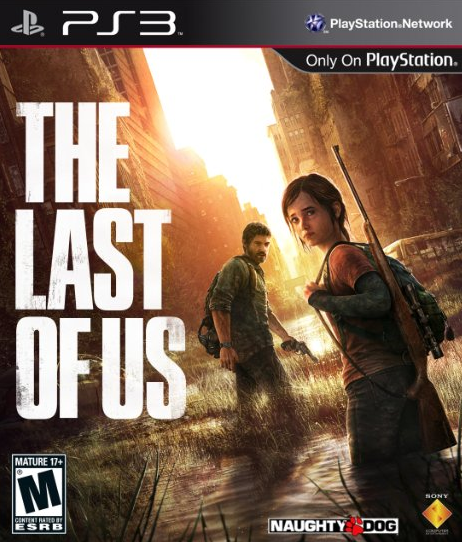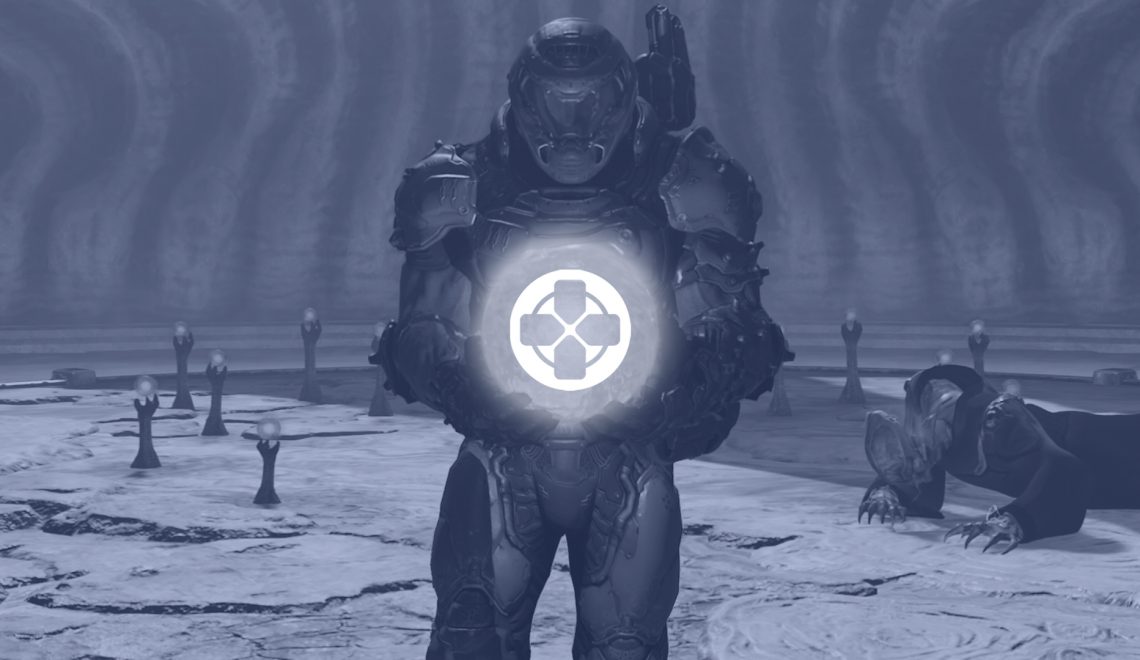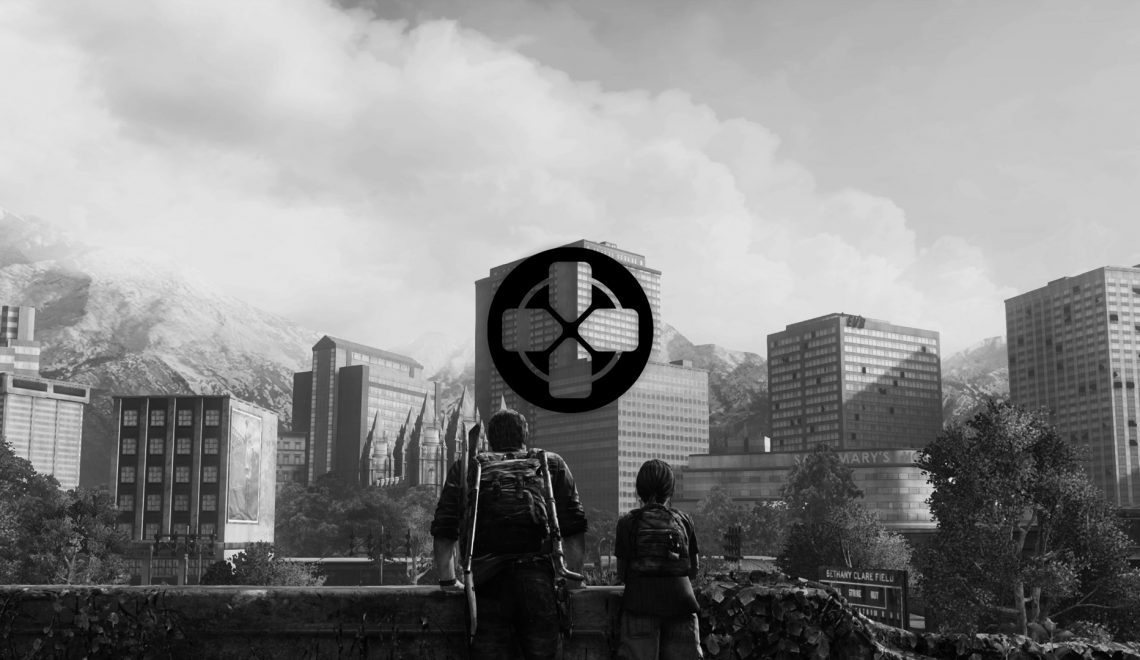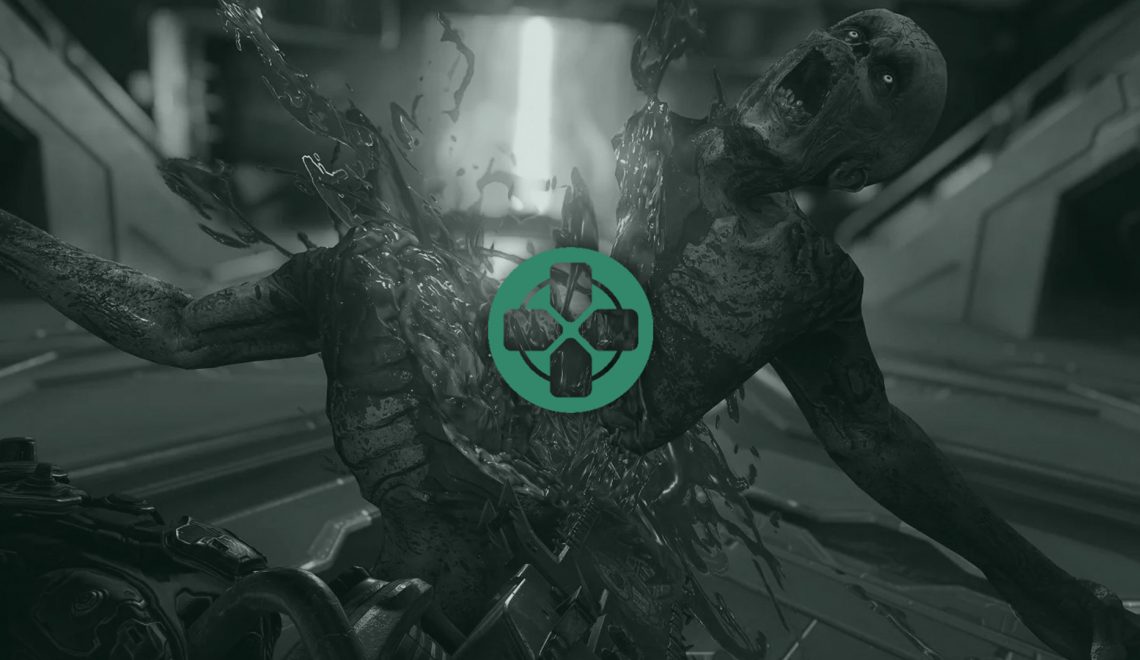This review was originally published on my Google Blogger website.
The Best Has Been Saved For Last
I’m not sure if anyone else has noticed, but Naughty Dog has taken a gradual, downward spiral in terms of how the tone of their games has been over time. Crash Bandicoot had all the pleasant, kid-friendly strangeness of Mario games with a preposterous setting built around fun platforming. Jak and Daxter is set in a cartoonish, sci-fi fantasy universe, but things such as its violence, humor, and stories are noticeably geared to a slightly more mature players (early teenagers) than a general audience for Crash Bandicoot. After this comes Uncharted, which marked Naughty Dog’s departure from outlandish worlds in favor of photorealistic graphics, human characters, and fairly realistic settings on Earth. There’s some mysticism, of course, but the Uncharted games provide more visceral experiences that aim to wow and captivate gamers’ minds, eyes, and even their emotions. And lastly, we fittingly reach The Last of Us, which is not only the developer’s darkest game yet, but one of the darkest in all of video games. It’s almost comical to contrast Crash Bandicoot and The Last of Us. To think that Naughty Dog went from that to this would be unbelievable to anyone who didn’t know the connection. In a way, the developer has grown up and matured a lot over the years, and it shows.
It’s been quite a while since I’ve had a PS3 game compete with the likes of their famous Uncharted 2: Among Thieves. Although Uncharted 3: Drake’s Deception is a spectacular game as well, its predecessor left a much larger impact on me due to its stunning visuals, blockbuster action, entertaining story, and memorable characters. I went into that game with high expectations, but it blew them out of the water when I actually played it. It’s a true masterpiece because I will never forget about it anytime soon. It ushered in a new standard for blockbuster video games.
However, it has finally met its match with The Last of Us. Although it’s not a thrilling ride in the sense of having – for example – unbelievable chase sequences, explosions everywhere, and huge buildings crumbling during platforming sections, it still surpasses Uncharted 2 in many areas. Never has there been a game with better character development or depth and variety to personalities; the graphics break the barriers between reality and fiction, which is especially evident in the surreal facial expressions of characters and environmental lighting; the third-person-shooter gameplay is of a slow-paced kind, but it is expertly done so, and requires strategy, precision, and methodical movement. And I could continue, but I must stop here before I spoil all of my major praises for the game. However, I will leave off my introduction by assuring you that The Last of Us is, without a doubt, the long-awaited “dessert” of this excellent, seven-year-long console generation.

Platform: PS3
Genre: Survival-Horror/Third-Person-Shooter
Developer: Naughty Dog
Publisher: Sony Computer Entertainment
Release Date (USA): 06/14/13
Reception: 95% (Metacritic score average)
Gameplay
Naughty Dog decided to make The Last of Us a third-person-shooter like Uncharted, but it would be a major mistake to compare both of them lightly. As I’ve already said, Uncharted is filled to the brim with adrenaline-pumping action, platforming sections that normally entail scaling walls like in Assassin’s Creed, and some minor puzzle-solving areas. The Last of Us, despite being in the same genre, is different in many ways. Let’s start out describing the shooting mechanics. Instead of smooth, snappy controls, The Last of Us has an intentional “looseness” and heaviness. Guns can be a nuisance at times to pull out due to a shaky aiming reticule, excessive recoil if they are fired too quickly and recklessly, and slow handling. Reloading is a horrifying nightmare in combat and enemies’ erratic movements and speed add more difficulty to this. However, even though these would be detrimental to other third-person-shooters as “problems,” they’re logical and brilliant additions to The Last of Us. After all, it’s a survival-horror game, and realistic survival in a horrifying environment is supposed to be a stressful and challenging (but fun) experience. I like to think of the classic Resident Evil games as a good comparison. Some might find the tank controls and difficult mechanics frustrating at first when encountering zombies, but over time, this frustration turns into an experience that’s rewarding for tactfully and strategically approaching combat scenarios. But unlike the old Resident Evil games, The Last of Us is much more satisfying upon mastering the controls. Instead of one-dimensional combat, this game offers up times where stealth is required, combat is necessary, and where either is acceptable. Although there were only a handful of moments where I felt one of these styles of gameplay was forced, there’s a nearly perfect mix of them.
This includes getting the hang of other things, such as conservatively managing resources, using a wide variety of vastly different weaponry, crafting specific items, using stealth effectively, and scavenging for supplies. All of these, combined with the aforementioned shooting gameplay, make The Last of Us an extremely slow-paced game through and through. Supplies are low in quantity and are needed to progress, so taking 3-5 minutes to thoroughly search a nearby house for necessities is a constant process. With these supplies – such as cloth, tape, blades, and alcohol – one could create Molotov cocktails, bandages, or even upgrade a melee weapon (like a baseball bat) with a blade on the end that serves as a one-time hit KO weapon. There’s even medicine to find that adds up in your inventory to unlock “enhancements” such as more health, better aiming, and so forth. What’s even more appealing about this is that all of these things must be created and managed in real time. Whenever the player brings out their backpack to work on items or look at a journal he/she found, great caution must be exercised before and during this time. This works extremely well with the game due to its ease of use and simple menu. Want to make a nail bomb? Upon looking in the backpack, the player simply has to scroll down to this specific item, see if they have the necessary “ingredients,” and hold down X for a couple of seconds as Joel makes it.
All of this would quickly fall apart if the AI did not play along with the unpredictable changes in scenarios, and I can report that the enemies and allies of this game are indeed intelligent and adapt surprisingly well. One of my favorite instances of this is when I was underground traversing an underground network of tunnels. At least a dozen Infected roamed around a large, open area in front of me with a few stone pillars spread out across the room. However, after killing some of the normal ones, I discovered there were some that were working together by bringing my attention to other parts of the room while others worked beyond my field of view to attack me from the side! There are other impressive instances like this throughout the game (such as enemies negotiating with you when you take someone hostage), but they are too numerous to list here. As for AI partners like Ellie, they normally stick very close to Joel, alert him to enemies’ locations, and even act independently in some respects. Ellie – if Joel is searching for supplies – will hang back and look around, react to certain actions he takes, and even incite random conversations. The AI act and behave quite realistically and don’t awkwardly hang around like dogs waiting for the player to initiate a cutscene, walk to a certain enemy triggering spot, and so forth.
However, there is one particular thorn that popped the immersion of the game at multiple points. Strangely enough, the enemy AI cannot detect companions. For example, I managed to make it just out of the line of sight of a bad guy as I slid from one table to another in a small room. Ellie ran out right after me and walked about three feet away in front of him in plain view. I thought I was doomed, but this was not the case. He went right on by as though Ellie were an invisible ghost. There was another instance where another partner warns Joel to be extremely quite in a cemetery full of sound-sensitive Clickers, but he proceeded to run behind me as his footsteps thudded and echoed across the entire area…the enemies never flinched at this. I will note that I’ve heard the former example was a design choice due to Ellie being spotted too many times by the enemy, so I will let it slide. Nevertheless, it still broke the immersion a bit, and I think it’s still important to bring up.
In summary, the gameplay is expertly designed to offer a challenging experience that combines realistic shooting mechanics, cool survival implementations, and smart AI.
Rating: 9.5/10
Sound
The Last of Us is a portrayal of nature conquering over humanity. Tendrils of weeds crawl over almost everything in sight; the infamous Cordyceps fungus festers and spreads spores in dark alleys and overtakes corpses; buildings lie desolate, decaying, and eerily sprawled with remnants of things humanity cherished and used daily. All of the aspects of the game come together to bring this possible post-pandemic world to life, and the sound effects play one of the most pivotal roles. By simply pausing and listening to the environments Joel travels through, one can make out the trees’ branches and other foliage slightly rustling in the wind and birds chirping in the distance; Clickers scuffle around as their spine chilling clicks and warbled cries fill the void air, and Joel’s backpack and clothes shuffle about as his small, jagged breaths become more noticeable as he tiredly jogs. The attention to detail for sound effects is a given for this kind of game, but how about the voice acting?
I normally talk about how certain games are among the best in a particular area. I rarely dish out compliments such as “the best,” but this is one time where I will say this. The Last of Us has the best voice acting in any game to date. Troy Baker (Joel) and Ashley Johnson (Ellie) are the stars of The Last of Us, and they give Oscar worthy performances as their respective characters. In addition to the other cast members, they were completely believable at all times, and not only did they do voice acting, but they did all the motion capture as well. The subtlest twitch of a mouth or wrinkle of an eyebrow was on full display throughout the game, and it scared me how well the actors pulled off this awkward, new form of acting. There’s simply nothing left to say here…The Last of Us is at no lack for pulling in players with captivating realism.
Lastly for this category is the music, and man, Gustavo Santaolalla (the composer, who is a famous Argentinean guitarist) took great liberty in creating unique songs for this game. In an interview with Emily Reese, he talks about using exotic instruments and a detuned guitar to give the music an open, airy, and natural sound. There is noticeable tuning that’s off a bit, the creak of a chair or long pause at certain parts of songs, and rhythm that never quite stays on target. But these are intentional decisions made during the creation process, and they serve to accentuate the game’s themes. One song called “The Last of Us (Goodnight)” is a melody less than a minute long and is played with a Ronroco (a type of South-American stringed instrument), but it sends chills down my spine due to its raw nature and simplicity. The entirety of the soundtrack is free of unnecessary complexity and bombastic pieces; the composer captures the game in a way no other person could have done.
Rating: 10/10
Visuals
Again, I stress how I don’t often christen any game as being the absolute best in a specific area. But I simply can’t think of a game that tops what The Last of Us accomplishes in terms of graphics. They are the best this generation of consoles has come up with. While games such as Battlefield 3, Uncharted 3, and Halo 4 certainly come close, the attention to detail is staggering in The Last of Us. As I’ve already mentioned, character’s facial expressions are uncanny in how real they appear. Even eyes express emotion, which range from having angry, beady pupils to glossy sheens from emotional shock. The environments also show attention to extreme detail. Light casts through dusty windows that reveal particles in the air; fire casts a rich glow upon any surface; every object in the path of the sun’s rays casts a shadow, to which some even move and sway (like with branches). Take my word when I say the graphical fidelity of this game pushes the boundaries of discerning reality from polygons. One could easily mistake The Last of Us as a next-gen game or something running on a high-end PC gaming machine. Naughty Dog has finally been the developer to showcase the complete power and full potential of the PS3’s limits.
Rating: 10/10
Story
The character progression and interaction is what takes center stage in The Last of Us. I would’ve thought that the history and world of this game would’ve been expounded upon because Naughty Dog has created a magnificent universe to draw great content from. However, these things are kept at a simple level so that Joel, Ellie, and the supporting cast have excessive time and attention to become people that players attach to (or hate in regard to villains!) even if some are only 2-4 hours in the game. Dark themes such as immense loss, human brutality, the abandoning of morality, and what humans are willing to do for those they love are explored in great detail as well and all tie back to Joel and Ellie. Speaking of them, the amount of dialogue, cutscenes with them, and growth between them in terms of their friendship, trust, and devotion to one another are done in excess to stress how much Naughty Dog desires the player to relate to them. Some game developers don’t try enough or try too hard to get characters right. For example, Danger Close wanted to make players connect to and care for the soldiers of Medal of Honor: Warfighter. While there were some great cutscenes to showcase the effects of war on soldiers and their family and friends, the story ultimately failed to make me care about any of the characters in it. Even when one of the main characters died, I simply didn’t connect to that. Just as was the case in the first game, the characters all had the same, generic personalities to me, and I couldn’t distinguish one from the other. But when it comes to The Last of Us, it’s the opposite case in every way. Naughty Dog went to the extreme and succeeded. I cared for Joel, Ellie, and many of the supporting characters because they were believable and likeable. The classic “zombie apocalypse” story with a new twist (fungal infection rather than viral) serves as an excellent backdrop to the exciting and depressing tale of Joel and Ellie, which ends in a way I never saw coming, but couldn’t have been more impressed with.
Rating: 9.75/10
Multiplayer
Instead of lumping in the multiplayer to the replay value of The Last of Us, I felt that wouldn’t be doing it justice. I originally thought it would be a decent experience like Uncharted’s multiplayer…I was wrong.
Upon arriving to the main menu of the multiplayer, the player is immediately tasked to become a Firefly or a Hunter (the two factions of the game). When one is chosen, the game explains how the multiplayer works, which is a bit different than one would expect. The overarching mode of the multiplayer is “Factions,” which is built around owning a clan (consisting of NPC characters) of survivors that fluctuates in size in response to how well a player performs in matches. However, the game will also randomly put the clan at risk with certain situations, such as a raid or hostage rescue attempt. To follow through with these events, the player must choose to complete a challenge (like obtaining a certain amount of revives or headshots). If it’s completely done, partially met, or unfulfilled by the end of three matches, the player could gain or lose survivors. This adds a metagame influence to the multiplayer because it has had me constantly paying attention to how my clan is coming along. There is an added sense of tension and risk to the multiplayer because of this, which is great to see here and not only in the campaign.
Before getting into the actual two modes (unfortunately, there are only two) of multiplayer, Survival (basically search-and-destroy) and Supply Raid (normal team deathmatch), one could fiddle around with customizing his/her character with a range of facial accessories (hats, glasses, etc.) or creating custom classes. Naughty Dog took a page from Treyarch’s book by having their own take on the “Pick 10” create-a-class system of Black Ops 2. A player can choose from a range of weapons and perks that have different values due to their potency; many unique classes are possible with this system. Once a match is underway, everyone must be watchful, careful, conservative, and – miraculously – work together to win. It’s that last thing I just said that shocked me while getting used to the multiplayer. If teammates are separated from each other, chaos will ensue. Lone wolfs may be safe in mostly every other shooter (even if some developers have valiantly attempted to structure teamwork into some of their multiplayer modes), this is not the case with The Last of Us. The saying “There’s strength in numbers” couldn’t be truer here.
The last important thing to mention is how important the backpack comes into play. Not only does it function in the same way as it does in the campaign, but players can also use “gears” earned through kills and other accomplishments to purchase extra ammo, upgrade the stats of a weapon, equip a third weapon, or buy body armor. Therefore, a battle has the chance to shift in odds as players use these upgrades for themselves, and it gives everyone a chance to keep on fighting or get a boost in luck. Whatever’s left is transferred back to unlocking more perks, weapons, and character aesthetics.
I think it’s necessary to point out that the majority of multiplayer modes don’t feel fresh and innovative. Thankfully, The Last of Us has something new, different, and even a bit eccentric. It breaks the conventions of fast-paced shooters by providing a multiplayer that demands patience, teamwork, conservation, and cleverness, and I absolutely adore it. It can be frustrating at first, but learning the ropes is more than worth getting into the swing of things. After several hours of time with it, I can more than confidently say that the multiplayer is unlike any I have experienced. There is innovation here, and rest assured, it is excellent.
Rating: 9/10
Replay Value
The campaign is a fitting 15-20 hours long. It took me about 18 hours to complete on the Hard difficulty (minus reloading certain checkpoints many times) and it isn’t too short or too long. There are certain collectables to find and a New Game Plus mode is unlocked upon finishing the game, but there isn’t much reason to replay the campaign for these reasons. It’s simply so good that it merits a second playthrough (and how I wish I had the time to do this). The multiplayer is unpredictable, of course, but I can see myself playing this several months into the future with about 30-35 hours of logged-in time. But even if the campaign were the only thing offered in The Last of Us, there is no reason on Earth that would stop me from recommending this game. The replay value is irrelevant for this game due to the incredible experience it contains, but it’s certainly there and plentiful with the surprisingly good multiplayer.
Rating: 8.75/10
VERDICT
When anything becomes excessively praised or popular, it’s susceptible to unwarranted scrutiny and criticism. I’ve seen those few, pretty strange complaints and negative attacks that nitpick at The Last of Us and make it seem flawed in many ways. However, I simply can’t comprehend or understand where they come from. The mainstream opinion, in which the case is saying The Last of Us is practically “god-tier,” is not hyperbole. This game really is one of the greatest accomplishments in voice work, acting, graphics, and character development ever seen in video games. What bolster these things are realistically challenging, survival-horror gameplay, jaw-dropping settings, a haunting soundtrack, and a surprisingly compelling and fresh multiplayer mode. The Last of Us is sitting at an unprecedented 95% on Metacritic (squeezing past the revered Bioshock: Infinite), and Naughty Dog absolutely deserves this for creating one of the greatest games of this console generation. No one should skip out on this game. Ever. And even though it’s imperfect, I think it deserves a 10 for what it has accomplished. Well done, Naughty Dog. Well done.
10/10



